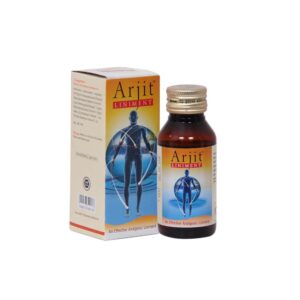ANALGESIC + RUBEFACIENT
Analgesic: Analgesics are a class of drugs commonly used to relieve pain. They work by reducing or blocking the perception of pain signals in the brain, providing temporary relief from pain.
There are different types of analgesics available, including non-opioid analgesics (such as acetaminophen and nonsteroidal anti-inflammatory drugs) and opioid analgesics (such as morphine and oxycodone).
Non-opioid analgesics, like acetaminophen, work by inhibiting the production of prostaglandins, which are chemicals that promote inflammation and transmit pain signals in the body. Acetaminophen is often used to relieve mild to moderate pain, such as headache, toothache, or musculoskeletal pain. It is also commonly used to reduce fever. The recommended dose of acetaminophen for adults is usually 325-1000 mg every 4-6 hours, but it’s important to follow the dosage instructions provided by your healthcare provider or the product label. Overdosing on acetaminophen can lead to severe liver damage.
Nonsteroidal anti-inflammatory drugs (NSAIDs) like ibuprofen and aspirin also have analgesic properties. They work by inhibiting the production of prostaglandins as well, but they also have anti-inflammatory effects. NSAIDs are commonly used for various conditions causing pain and inflammation, such as headaches, menstrual cramps, dental pain, sprains, and strains. The recommended dose of NSAIDs may vary depending on the specific drug and indication. However, it is generally recommended to start with the lowest effective dose and take it with food to minimize the risk of stomach irritation. NSAIDs can cause side effects such as stomach upset, heartburn, and in some cases, they can increase the risk of stomach ulcers, bleeding or kidney problems.
Opioid analgesics are potent pain relievers and are primarily used for severe acute or chronic pain that does not respond well to other medications. These medications act on the opioid receptors in the brain, spinal cord, and other parts of the body to reduce pain perception. Opioids are usually prescribed under the guidance of a healthcare professional due to their strong effects and the risk of tolerance, dependence, and addiction. The dose and frequency of opioid analgesics should be carefully determined by the healthcare provider, as misuse or overdose may lead to serious health complications or even death. Opioids can cause side effects such as drowsiness, constipation, nausea, vomiting, and respiratory depression.
It is important to use analgesics responsibly and follow the recommended dose and duration of treatment provided by your healthcare provider to minimize the risk of side effects or potential complications. Always consult with a healthcare professional before starting any medication.
Rubefacient: Rubefacient is a topical drug used for its counterirritant properties. It is typically used to relieve minor aches and pains associated with conditions like arthritis, muscle strains, and joint pain. The term “rubefacient” refers to its ability to cause redness and heat on the skin’s surface, which alleviates pain by distracting nerve endings and increasing blood flow to the area.
The exact mechanism of action of rubefacients is not fully understood. However, it is believed that these substances work by irritating the skin and underlying tissues, causing blood vessels to dilate and increasing blood flow. This increased blood flow helps to reduce pain and inflammation and promotes the healing process.
Rubefacients are available in various forms such as creams, ointments, and sprays. The dose and frequency of application can vary depending on the specific product and the condition being treated. It is important to follow the instructions provided by the manufacturer or as directed by a healthcare professional.
While rubefacients are generally safe to use, they can cause some side effects. Common side effects include skin irritation, burning sensation, redness, and itching at the application site. These effects are usually mild and temporary, but if severe or persistent, medical advice should be sought. It is important to avoid applying rubefacients to broken skin, wounds, or mucous membranes, as it can cause further irritation or adverse reactions.
As with any medication, it is essential to inform your healthcare provider about any existing medical conditions, allergies, or medications you may be taking before using rubefacients. They will be able to assess whether this drug is suitable for you or if there are any potential interactions or contraindications to consider.

